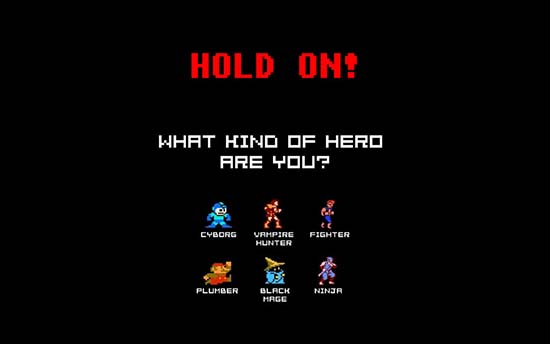F1 Video Games 1991
F1 Video Games of 1991 – In this post I take a closer look at the formula one games released back in 1991. As you can see from the following list, there were quite a many F1 games produced in 1991, some are better some are worse.
Formula 1 games in no specific order:
- F1 Circus 91 (PC Engine)
- F1 Circus MD (Sega Mega Drive)
- Fastest 1 (Sega Mega Drive)
- F1 Exhaust Note (Arcade)
- F-1 Grand Prix (Arcade)
- F1 Grand Prix: Satoru Nakajima (Sega Genesis)
- Satoru Nakajima F-1 Hero 2 (NES)
- Satoru Nakajima F-1 Hero GB World Championship ’91 (Game Boy)
- Al Unser Jr.’s Turbo Racing (NES)
- Formula One Grand Prix / World Circuit (Amiga / Atari ST By MicroProse)
- Super Grand Prix (Amiga, Atari ST)
- Formula 1 3D: F1 Manager II (C64)
Release date: 1991
Platforms: Nintendo NES, Game Boy, PC Engine, Arcade, Mega Drive/Genesis, Amiga, Atari ST, Commodore 64
F1 Circus 91 (PC Engine)

F1 Circus 91 (PC Engine) is the second formula 1 racing game in F1 Circus series that started in 1990. None of the games in the series was released outside Japan, however most of the games are partly in english and therefore fully playable to non-japanese speakers.
The game is presented from the overhead/top-down view and continues the high speed gameplay of its predecessor.
The series did not yet have an official license, and so just like the first game it only features teams and drivers with similar spelling and looks. The game itself plays much like the original, and focuses on car tuning and damage.
The World Championship mode has of course returned, though the managerial Constructors mode is no longer present.
There is also a Free Attack mode, where any course can be freely practiced; a Training mode, where special training courses can be raced on to learn the ins and outs of the game; and a Watch mode, where the player can choose a course and watch a demonstration race.
F1 Circus MD (Sega Mega Drive)

Fastest 1 (Sega Mega Drive)

Fastest 1 (Sega Mega Drive) is a a Sega Mega Drive F1 racing game, also released exclusively in Japan.
While most of F1 games at the time were poor simulations of the races, Fastest One proved to be one of the most realistic of the era. The game once again featured team and driver names similar to the real life namesakes. A choice of up to 18 playable vehicles could be used in every mode provided.
The game is presented from the more traditional, from the behind of the car view.
A player could participate in as many seasons as desired the championship mode. The player started out the first season with a least desirable team. Only by winning races did the player get promoted to the more desirable teams. A player could modify the steering, gear box, tires, wings, and color of their chosen racing vehicle.
Fastest 1 emphasized simulated Formula One action over arcade-style gameplay. The cornering was harsher that most games released at that time and the player had to shift from neutral, even in cars with automatic transmission, in order for the vehicle to start moving.
Talking about reality – You actually had to manage your tires throughout the race. And what I like the most about this game was the car handling and cornering, which was a whole another level compared.
What I didn’t like was the sound of the car and graphics were not that impressive either.
F1 Exhaust Note (Arcade)

F1 Exhaust Note (Arcade) is a two-player f1 racing arcade game that has a standard dual racing cabinet setup. Each player station has a 25-inch monitor, steering controls, shift controls, pedals, and a decorative seat. The sound originates from the back of the seat giving the player surround sound effect.
The game was developed for the Sega System 32 hardware that was used for its sequel F1 Super Lap and Capcom’s 1995 title Slip Stream. Because it also didn’t have an FIA license, all of the cars and tracks were mainly original.
It was also one of Sega’s first sit-down twin cabinets with link-up compatibility, and the first arcade game ever to have a special attract screen taking up both monitors when neither side of the cabinet was being used.
You race a Formula 1 car, which closely resembles the Williams/McLaren F1 machines that were used at that time
Although it wasn’t a fully licensed F1 game, it had an excellent sense of speed, great handling and silky smooth framerate. The slim but rocking soundtrack along with the audible car sounds add to the experience.
Graphically it looks good among other Super Scaler titles like Power Drift, Rad Mobile and GP Rider.
Ultimate World of Warcraft Guide
Want to find out how you can level 1-100 in 2 days and 2 hours of played time? Dugi Guides will show you how to powerlevel the FASTEST way possible no matter what faction or class you’re playing in Warlords of Draenor.
You like this blog? Support matters!
Nintendo NES Mini
Rediscover your favourite 80s videogames in HD! Each title for the Nintendo Classic Mini: Nintendo Entertainment System is displayed at a smooth 60Hz via the included HDMI cable and can be enjoyed in one of three visual modes!
Nintendo SNES Mini
Nintendo SNES Mini has the same look and feel of the original system only smaller and comes pre-loaded with 21 games. Step back into the 90s and re-experience some timeless classics!
F-1 Grand Prix (Arcade)

F-1 Grand Prix (Arcade) is a top-down viewed F1 racing game first released on the arcades and then ported to Super Famicom the following year. It’s the first game in Video System’s licensed F-1 Grand Prix series, based on the seasonal television series by Fuji Television and FOCA.
Unlike most of the other F1 games at the time, it features real teams and drivers. There are only 6 teams in the arcade game, later Super Famicom port provided complete lineup with 34 drivers and 18 teams.
The game features various options for manual car tuning and has a damage system: collisions cause the components to weaken. In order to avoid a fast race end, a pit stop is advised to repair damages.
You may think, it’s another top-down racing game like F1 Circus, however it’s very different. Unlike any other top-down racing game, your F1 car in fact stands still on the screen and in corners the environment rotates around the car.
One of the cool features in this game is a map that shows the location of your closest opponent.
Available playing options are the whole Grand Prix, a single race and a best lap competition.
F1 Grand Prix: Satoru Nakajima (Sega Genesis)

F1 Grand Prix: Satoru Nakajima (Sega Genesis) is a top-down viewed F1 racing game based on the career of Satoru Nakajima, the first full-time Japanese racer in the history of Formula One.
Satoru Nakajima F-1 Hero 2 (NES)

Satoru Nakajima F-1 Hero 2 (NES) is an F1 racing game, a sequel to Satoru Nakajima F-1 Hero. Unlike the first game, it was only released in Japan. The game is presented in from the behind of the car view.
Satoru Nakajima F-1 Hero GB World Championship '91 (Game Boy)

Satoru Nakajima F-1 Hero GB World Championship ’91 (Game Boy) is a Japan-exclusive Game Boy Formula One video game published by Varie, endorsed by Satoru Nakajima.
Al Unser Jr.'s Turbo Racing (NES)

Al Unser Jr.’s Turbo Racing (NES) is an F1 racing video game for the Nintendo Entertainment System console. The game remains based on the Formula 1 World Championship, despite Unser having never competed in it.
Formula One Grand Prix / World Circuit (Amiga / Atari ST By MicroProse)

Formula One Grand Prix / World Circuit (Amiga / Atari ST By MicroProse) is an F1 racing simulator released at Christmas 1991 by MicroProse and was created by game designer Geoff Crammond.
Super Grand Prix (Amiga, Atari ST)

Super Grand Prix (Amiga, Atari ST) is an overhead racer, essentially an updated 16-bit version of Codemasters’ Grand Prix Simulator. As before, the basic gameplay resembles Super Sprint, with an overhead view of simple tracks incorporating hairpins, oil slicks and underpasses.
The game now features 4 modes of play – Formula 1 cars, motorbikes, drag racers, and a mode featuring a variety of vehicles. These include those 3 as well as police cars, go-karts and a tank, which is too slow to be competitive but allows you to shoot out the other cars, and can be a blockade as you try to lap it.
Formula 1 3D: F1 Manager II (C64)

Formula 1 3D: F1 Manager II (C64) is an F1 simulation game.
Summary
In 1991, lots of F1 video games were released. Some of them were better, and some ot them, let’s say, not so good. But it was definitely worth to try them all!
First of all, the first proper F1 simulation game (Formula One Grand Prix, also released as World Circuit) was released on various home computers. And it was something that was never seen before. That started completely new area in F1 video games.
Also, on the arcades, two amazing games were released. One of them looked better than anything before, viewed from behind of the racing machine. The other one, however, was an amazing arcade style action viewed from the top-down view.
On Commodore 64 you could enjoy am amazing F1 manager.
Mega Drive did a pretty good job with a decent port/addition to the F1 Circus series and also, Fastest 1 was one of the more realistic games in terms of car handling and tire managing for example. F1 Circus 91 on PC Engine on the other hand, was average.
Talking about stars, if you didn’t know who Satoru Nakajima is, then as many as three games featuring Satoru were released on various platforms, including Mega Drive, NES and Game Boy. Another racing star from the 90s, Al Unser also got his own game.
And some of the F1 games were quite bad, specifically I am talking about Super Grand Prix, which was released on the Amiga and Atari ST.











